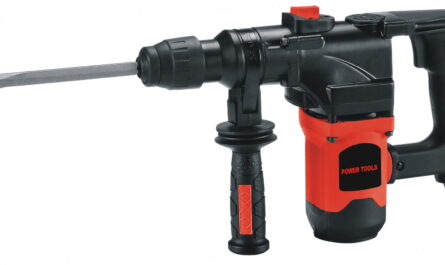
They use indium gallium arsenide (InGaAs) as the focal plane array image sensor instead of the silicon sensors used in traditional cameras. InGaAs has a higher sensitivity to infrared light compared to silicon, allowing them to detect infrared wavelengths from 900 nm to 1700 nm. Due to this enhanced infrared sensitivity, InGaAs Cameras are commonly used for thermal imaging and night vision applications where traditional cameras cannot produce useful images.
The primary advantage of InGaAs over other infrared detector materials like mercury cadmium telluride (MCT) is that it can be grown on inexpensive and reusable silicon substrates through molecular beam epitaxy. This considerably reduces the manufacturing cost compared to MCT detectors which require expensive substrates like silicon, gallium arsenide or lithium niobate. They can also operate at room temperature without requiring cooling systems, further reducing costs.
Applications of InGaAs Cameras
Thermal Imaging
One of the most common applications of these is thermal imaging or thermography which detects infrared radiation emitted or reflected from objects. By capturing the temperature variations invisible to the human eye, thermal cameras allow users to see heat signatures and detect problems. Some examples include:
– Building inspections to detect moisture, air leaks or other thermal anomalies in walls and rooftops.
– Predictive maintenance of industrial equipment by identifying overheating components.
– Surveillance systems for detecting body heat at night.
– Firefighting to see through smoke filled environments.
Night Vision
InGaAs Cameras have greatly improved low light and night vision capabilities compared to traditional cameras. Some key applications include:
– Automotive night vision systems to detect pedestrians and animals on the road ahead at night.
– Surveillance cameras for enhanced visibility in low light or complete darkness.
– Astronomy applications for infrared astronomical observations.
– Military and defense uses such as night vision goggles.
Agriculture
In agriculture, InGaAs Cameras allow infrared inspection of crops, soil moisture levels and detection of plant diseases or irregular growth before visible to the naked eye. This enables timely intervention and improved yields.
Advantages of InGaAs over Silicon
Beyond infrared sensitivity, InGaAs Cameras have several performance advantages over conventional silicon cameras:
Higher Resolution – Latest InGaAs sensors can provide resolutions over 2000×2000 pixels which allow detailed images even from long distances.
Low Noise – InGaAs has inherently low thermal noise even at room temperature, allowing very high sensitivity detection of faint infrared signatures with excellent signal-to-noise ratio.
High Frame Rates – InGaAs Cameras are capable of frame rates exceeding 300 fps for capturing fast motion sequences in thermal applications.
Compact and Lightweight – Latest InGaAs optics and sensors are very small compared to earlier IR cameras, facilitating integration into portable and handheld devices easily.
Lower Cost – Despite high performance, InGaAs technology continues to reduce manufacturing costs through economies of scale and integration of CMOS readout circuits.
Outlook
Demand for InGaAs Cameras across multiple industries is rapidly increasing driven by their unique capabilities. Thermal imaging and vision applications spanning healthcare, automation, R&D and more are accelerating adoption. Emergence of InGaAs SWIR cameras extending beyond traditional NIR into short wave infrared range will open up new growth opportunities. Overall InGaAs technology is revolutionizing IR sensing and truly enabling vision in the non-visible infrared spectrum.
*Note:
- Source: Coherent Market Insights, Public sources, Desk research
- We have leveraged AI tools to mine information and compile it


